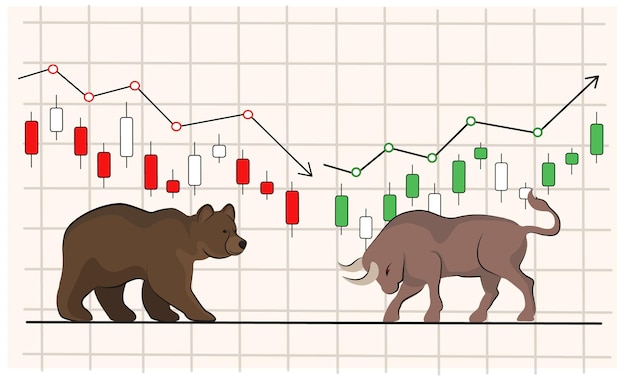In the ever-evolving landscape of trading, investors are constantly seeking tools and strategies that can provide them with a competitive edge. Two popular approaches—DOM (Depth of Market) trading and traditional charting—offer distinct methodologies for interpreting market data and making informed decisions.
While traditional charts lay out price movements over time, providing a visual representation of trends and momentum, DOM trading delves deeper into the order flow, presenting a real-time snapshot of market depth and liquidity. Each method possesses its own set of advantages and drawbacks, appealing to different types of traders with varying risk appetites and analytical styles.
As market dynamics become increasingly complex, the choice between DOM trading and traditional charts is one that requires careful consideration and understanding. So, which path should you embark on? Let’s explore the nuances of both strategies to determine which one might best suit your trading needs.
Understanding the Basics of DOM Trading and Traditional Charts

Understanding the Basics of DOM Trading and Traditional Charts is essential for traders looking to navigate the complexities of the financial markets. At its core, DOM trading, or Depth of Market trading, provides a real-time view of market orders, showcasing the liquidity at various price levels—offering traders a dynamic glance into where supply meets demand.
This vibrant interface allows for immediate insights, empowering traders to make split-second decisions based on rapid fluctuations in market sentiment. In contrast, traditional charts display price movements over time, condensing this temporal data into patterns that can signify potential future trends.
While charts can provide a broader view, often suited for longer-term strategies, DOM trading shines in its precision and actionable detail, presenting a stark choice: a snapshot of historical movements or a live pulse of current market activity. As you consider which method aligns with your trading style, each comes with its distinct advantages and nuances, inviting you to explore the depths of market interaction.
Comparing Visualization Techniques

When delving into the realm of market analysis, the choice of visualization techniques can significantly shape a traders perspective. DOM (Depth of Market) trading offers a granular view of order flows and market depth, allowing traders to gauge real-time supply and demand dynamics with precision.
This technique provides an engaging, interactive experience, revealing the intricate dance of buyers and sellers. In contrast, traditional charts, with their clearly defined candlesticks, trendlines, and indicators, tell a more straightforward story, encapsulating price movements over time and allowing for easy identification of patterns.
While DOM focuses on the immediate pulse of the market, traditional charts paint a broader narrative, useful for longer-term strategies. Ultimately, the decision between these visualization methods should align with your trading style, risk tolerance, and the type of insights you seek from the market’s ebb and flow.
Real-Time Decision Making

Real-time decision making in the context of DOM trading offers a striking contrast to traditional chart analysis, fundamentally altering how traders engage with the market. In the fast-paced world of finance, the ability to react instantly to shifting market conditions is invaluable.
Here, traders monitor the depth of the market—assessing buy and sell orders at various price levels—enabling them to gauge market sentiment almost instantaneously. This dynamic environment allows for quick maneuvers, such as rapidly filling orders or adjusting strategies based on real-time data, something traditional chartists might miss while waiting for confirming patterns or indicators.
As a result, those who leverage the depth of market can exploit opportunities during volatile moments, capitalizing on price movements that may last only seconds. Ultimately, real-time decision making in DOM trading isnt just an option—its a necessity for traders seeking to thrive in a landscape where every tick counts.
Conclusion
In conclusion, the choice between DOM trading and traditional charts ultimately depends on your trading style, goals, and comprehension of market dynamics. While DOM trading offers a granular view of market depth and can enhance your decision-making in fast-paced trading environments, traditional charts provide a broader perspective on price movements and trends over time.
Each approach has its unique strengths and weaknesses, and it may be beneficial to incorporate both methods into your trading arsenal. By understanding the nuances of each, you can make more informed decisions that align with your personal strategy, ultimately leading to a more successful trading experience.




